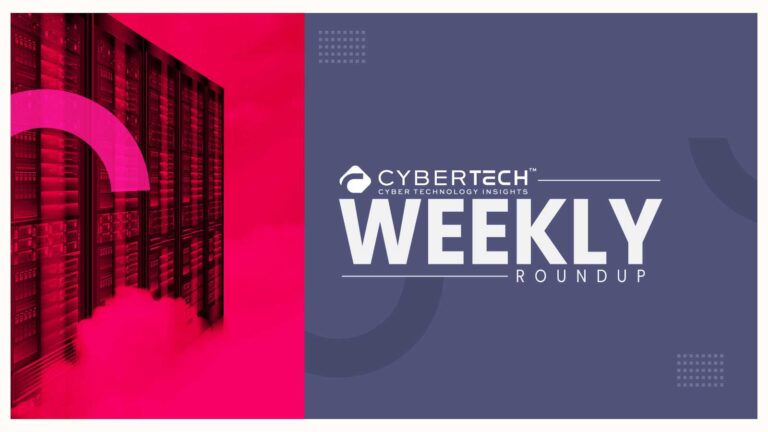While Account-Based Marketing (ABM) campaigns remain at the top of B2B marketing approaches, cyberattacks on these campaigns are evolving rapidly. Securing ABM campaigns in 2025 is now more than ever about being ahead of the evolving threats. Indeed, the integration of digital transformation and mounting cyber attacks makes it essential for marketers to include a solid cybersecurity structure. It safeguards their ABM investment and maintains long-term success. This article introduces the top 10 rules for attaining safe ABM success. In a time when cyber attacks are on a steady upward trajectory.
1. Invest in Advanced Threat Detection Tools
The first principle to ensure your ABM strategy for 2025 is that it should include best-in-class threat detection software. This software enables real-time monitoring that notifies you of any probable weaknesses or breaches before them becoming disaster-level problems. Companies can detect suspicious behavior, so data loss or unauthorized access is prevented. With the use of AI-driven detection systems and behavioral analytics.
A great example is the use of threat intelligence platforms by vendors such as Palo Alto Networks or Cisco. These products monitor in real-time against threats from different data points. And also update proactive defense systems, protecting sensitive client data within ABM campaigns.
2. Prioritize Data Encryption
Data encryption is still the best way of securing sensitive data in ABM campaigns. With the growing rate of cyberattacks on customers’ data, data encryption makes intercepted data unreadable and also unworkable.
Enabling end-to-end encryption across all of your ABM platforms and communication channels helps to secure customer data. Certainly, also comply with privacy laws like GDPR and CCPA. Partners like Microsoft offer encryption products that are designed especially to integrate with your ABM technology.
3. Regularly Update Software and Systems
Indeed, one of the simplest yet least employed means of protecting your ABM campaigns is to have your systems and software updated. Cyber attackers will most frequently attack problems in outdated software, and that is why it is very important to have systems updated.
Always make sure your ABM tools, CRM systems, and any other supporting platforms are running with the newest security patches. Vendors such as HubSpot and Salesforce produce security patches routinely, which improve the general security of your systems and data.
4. Implement Multi-Factor Authentication (MFA)
Multi-factor authentication (MFA) adds another layer of security because it asks for something more than the password to progress to the valuable systems. MFA is critical for ABM tools handling sensitive customer information and activity history.
Make sure that all major members of your ABM team, such as sales, marketing, and IT personnel, utilize MFA to log into ABM platforms, CRM tools, and email accounts. Companies like Okta and Auth0 offer secure authentication solutions that can be incorporated into your workflows.
5. Segment and Control Access to Data
Not all employees need to view all the data in an ABM campaign. You need to segment access based on roles and responsibility so that the risk of data breach remains low. With role-based access control, you restrict access to sensitive customer information and marketing materials.
For example, Zscaler, the leading cloud security company, has solutions which enable organizations to establish stringent access policies such that only authorized personnel can access portions of your ABM data.
6. Educate Your Employees on Cyber Hygiene
Cybersecurity isn’t solely an IT department responsibility; everyone in your ABM team has a role to play. Mandatory training in cyber hygiene, such as identifying phishing emails, generating strong passwords, and protecting data, is the solution to reducing the security intrusions that are the result of human error.
There are companies such as KnowBe4, which offer cybersecurity awareness and training solutions so that businesses can improve the intelligence of their employees when it comes to potential vulnerabilities and best practices.
7. Utilize Secure Communication Channels
While making contact with your target accounts is not just about having a great phone call or email, you also need to make sure the channels are secure to ensure data breaches and unauthorized access to confidential information are avoided.
For example, using Slack Enterprise Grid or Microsoft Teams provides secure, encrypted communication spaces that can be shared with internal and external stakeholders to debate ABM campaigns. This keeps exposure risk down from sitting on insecure platforms or unsecured email.
8. Leverage Zero Trust Architecture
Zero Trust is a security approach that assumes every request for access to corporate resources is a threat, no matter where it’s coming from. In Zero Trust architecture, you give access to data and systems on a need-to-know basis and continuously verify the identity and security of the users in real time.
Large tech giants like Google and Cisco have Zero Trust solutions that you can easily integrate into your ABM setup to further improve security. With this method, you reduce the risks from stolen credentials or insider attacks.
9. Implement a Strong Incident Response Plan
Even the best-prepared organizations can have security incidents. It is essential to have an incident response plan that also can contain and reduce the damage right away. Your plan needs to have clear procedures for detection, reporting, and responding to cyber threats and a communications plan for notifying stakeholders.
IBM QRadar and Palo Alto Cortex XSOAR are some of the systems that provide sophisticated tools in automating breach response processes towards quick action in case of a breach.
10. Monitor Your Systems and Audit Them Periodically
Continuous monitoring and auditing is essential to securing your ABM efforts. You can detect abnormalities that can also signify a security threat by auditing your users’ activity, transaction logs, and system performance at fixed intervals.
Businesses such as Rapid7 and Splunk provide real-time monitoring and auditing tools that enable organizations to be ahead of the curve when it comes to potential cyber threats. On these platforms, you can get important insights regarding your ABM security position and take preventive measures to lock down your campaigns.
As ABM strategies become increasingly more advanced in 2025, it is more essential than ever to be able to have the security of your campaigns guaranteed. By keeping these 10 rules of safe ABM success in mind, you can protect your marketing campaigns, protect your data, and establish trust with your target accounts. With the ever-changing cyber threat landscape, taking the proper cybersecurity measures is not just a precaution but also a necessity for long-term success.
FAQs
1. Why is cybersecurity a critical component of ABM campaigns in 2025?
Cyber threats targeting B2B marketing campaigns have become more sophisticated, therefore often exploiting gaps in data sharing, CRM integrations, and third-party tools. Without a cybersecurity framework, ABM campaigns risk data breaches, reputational harm, and regulatory non-compliance, all of which can disrupt revenue pipelines and erode trust with high-value accounts.
2. How can we ensure our ABM tech stack is secure against modern cyber threats?
Start by using trusted vendors that provide security-first tools, enforce regular software updates, and support encryption. Integrate solutions that offer threat detection, multi-factor authentication, and role-based access controls to reduce attack surfaces across your marketing platforms and customer data touchpoints.
3. What kind of employee training is needed to protect ABM data integrity?
All team members—from sales and marketing to operations—should receive cybersecurity awareness training. This includes recognizing phishing attempts, practicing password hygiene, and understanding their role in protecting sensitive account information. Regular simulations and updates help reinforce vigilance as threats evolve.
4. What is the role of Zero Trust in securing ABM systems?
Zero Trust frameworks enforce continuous verification, granting access only to those who need it while monitoring every access attempt. Zero Trust reduces the risk of internal misuse and external breaches from compromised credentials. This is also for ABM campaigns that involve sensitive personalization, sales data, and client information.
5. How often should ABM systems be audited for security vulnerabilities?
Security audits should be performed quarterly at a minimum, with continuous monitoring in place to track anomalies in real-time. Automated audit tools help flag suspicious behavior early. This allows marketers and IT teams to respond proactively before threats escalate into breaches.







